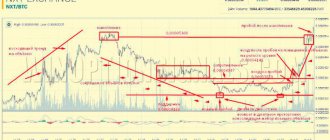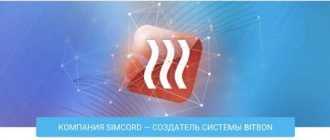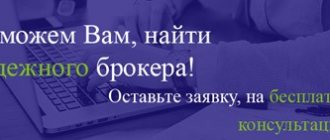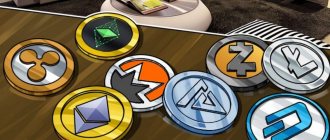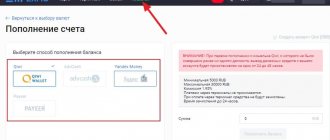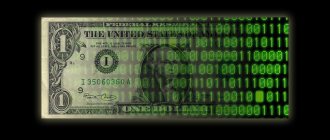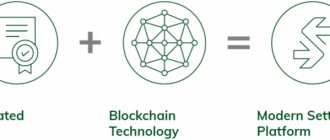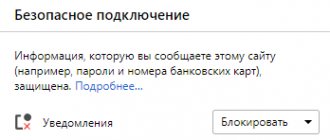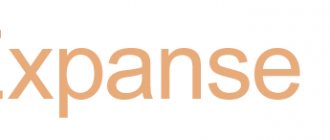Author: Magnussen
Brief description: the cross-chain between Bitcoin, Ethereum, NEO, Lisk, Waves, the 6th blockchain has not yet been disclosed. The main difference from other cross-chains is the replacement of validators with the Proof of Edit Distance (PoED) consensus mechanism.
https://www.blockcollider.org/
The prototype: https://github.com/blockcollider, a testnet according to the team, was carried out back in October 2017, and now all work has been suspended until the mainnet.
Person on the team: 7
Are there any competitors: PolkaDot, Cosmos, Ark
Legal points:
In the telegram group, the admin states that they comply with SEC requirements.
Upon registration they only answer:
Linkedin lists its headquarters in Chicago, Illinois and is listed as a privately owned business. No records could be found in the company registries of the United States or the state of Illinois.
What does "SEC compliance" mean? Perhaps the tokens will be security. You can't trade security tokens on regular exchanges, right? We have DEXs! But no. Tokens are of the ERC721X standard. No DEX supports them yet.
There is another strange thing: the letters indicated the time in Moscow time and North American Eastern Time EST. We look at the site in Alexa, and we see that the majority of traffic is from the USA (which, in principle, is logical), and Russia is in second place - the result of activity in the ICODrops chat?
SEC warns of signs of scam among ICOs
The US Securities and Exchange Commission (SEC) has identified signs of fraudulent ICOs and warned investors about the possible loss of their investments.
This is stated in the regulator’s message published on August 28.
“Fraudsters often try to use new technologies as bait to attract potential victims and convince them to invest their money in a fraudulent project. These scams use a pump-and-dump strategy and manipulate the market through publicly traded companies that claim to be able to provide access to new technologies.”
The American regulator recalled that it has the right to suspend trading in shares if it sees the need to protect investors and public interests. The list of circumstances that may lead to suspension of trade includes the following items:
- Lack of current, accurate or adequate information about the company - for example, when the company has not filed financial statements for an extended period;
- Lack of accurate and publicly available information, including in press releases and company reports, about the current status and financial condition of the company; or
- Questionable stock trading, including possible market manipulation.
The US Securities and Exchange Commission recalled that in recent months, for the first time, it suspended trading in the securities of several companies that announced investments in ICOs and advertised cryptocurrency assets. Four companies were included in the list of suspicious assets: First Bitcoin Capital, CIAO Group, Strategic Global and Sunshine Capital.
The SEC document provides basic recommendations for investors who, despite warnings, continue to be interested in investing in cryptocurrency assets and ICOs.
Always research a company before buying its shares, especially if trading in its securities has been suspended. Explore the financial condition, its organizational structure and development prospects of the company. This information is often contained in registration documents that a company files with the SEC. Access to them is open and free.
Some companies are not required to file reports with the SEC. These are known as non-reporting companies. Investors should be aware of the risks of trading in the shares of such companies as they may not provide current and accurate information that would enable investors to make informed investment decisions.
Investors should also conduct their own research and be aware that information from online blogs, social networking sites and even a company's own website may be inaccurate and intentionally misleading.
Be especially wary of stocks, including those related to new technologies such as ICOs.
Signs of possible ICO fraud include the following:
- The company, which has common stock issues, claims that its ICO complies with SEC requirements, without explaining exactly how its token offering complies with securities laws; or
- A company that has common stock issues seeks to raise capital through an ICO or invest in an ICO-related business described in meaningless or vague terms of technical and legal jargon.
- An increase in share price or trading volume occurs simultaneously with an intensification of the marketing and PR campaign;
- The project distributes press releases or advertises events that ultimately do not occur (for example, announces preliminary deals or agreements, announces deals without naming the partners, or announces deals in overly promotional terms);
- The company has no real financial transactions (it has few assets or minimal gross income on its balance sheet);
- The company issues a lot of shares without a corresponding increase in the company's assets; and
- Frequent changes in company name, management or type of organization.
Whitepaper/roadmap summary:
Whitepaper was created back in February 2020 - the project was clearly not put together in a hurry. Available in Chinese, French and English - not bad, a plus in the piggy bank.
https://s3.amazonaws.com/blockcollider/blockcollider_wp.pdf
There is no roadmap yet, only a period of 2 years is mentioned, when 6 main blockchains will be connected, the network will be deployed, and after that it will be possible to add and remove other blockchains. And it is planned to connect FIX at the end of 2020 - read about it below. There is a small list of events in April: https://blog.blockcollider.org/april-2018-calendar-2a653a99cce1
Technology Summary:
https://blog.blockcollider.org/collision-course-emblems-nrg-ed17e2bdea15
https://blog.blockcollider.org/collision-course-mining-the-block-collider-102e77dbd193
In general, the function of the network is similar to sharding in Ethereum - connecting other chains and exchanging between them. That is, intermediary operations for transferring from one blockchain to another in the form of exchanges and exchangers are excluded. At first (apparently, the first 2 years - the so-called “incubation period”) Bitcoin, Ethereum, NEO, Lisk, Waves and the still secret 6th blockchain will be connected to the network - perhaps something like Cardano or Eos.
The main difference from PolkaDot and Cosmos is the absence of validators - guarantors of trust in the network, who perform the role of miners in PoW blockchains in PoS. That is, validators confirm and include blocks from other blockchains into the chain, receiving a reward for this. Block Collider co-founder Patrick McConlogue said validators don't help decentralization. On the contrary, those who have more money to buy tokens and run large nodes, and those who have the fastest servers, can get the greatest advantage, which leads to an increase in the priority of individual network participants and, accordingly, its centralization.
the Proof of Edit Distance (PoED) consensus algorithm . As in PoW, a node must solve a computational problem in order to win a block. But here the block is calculated based on the distance between the hashes of the member chains, the transactions they contain, and the previous block. Distance is characterized by the proximity of lines to each other. Strings apparently mean hash headers. Unfortunately, in the telegram chat the team cannot answer in simple words what is meant by “distance” - they refer to this article https://blog.blockcollider.org/building-a-blockchain-singularity-with-proof-of-edit -distance-1d60c328de7a , where there is also no clear definition of what this distance is. From what I've read, I can draw some conclusions just from this picture:
Points are block hashes of specific chains. In this article https://blog.blockcollider.org/collision-course-mining-the-block-collider-102e77dbd193 the Block Collider network is compared to a machine tool where some points are connected to each other. Further, in another article we read: “Edit distances are a class of algorithms that score how close two strings are to each other. For instance the an Edit Distance for “ETH” and “ETC” is “0.8222” where two identical strings would score a “1”. There are many algorithms also in the string similarity space including the Levenshtein Distance, Smith-Waterman Gotoh Distance, and the Ratcliff-Obershelp Distance.”
That is, the “distance” is the difference between the hashes of the nearest blocks from different blockchains. Let's say two identical (what do they mean by identity? block sequence number? transaction amount?) strings (block hashes) on the BTC and ETH networks have the value "1". And the similarity of their hashes will be 0.8222 - that is, 82.22%. And this is the task of the nodes - using various formulas, find in different networks such blocks whose hashes will differ as little as possible. And this difference most likely is “distance”.
One can note criticism of such a consensus from a developer-researcher of the competing cross-chain Cosmos, who believes that PoED is a much more cumbersome solution than traditional PoW:
Of course, blocks from hashes of blocks are cumbersome, so to speak, unnecessary information noise.
Blocks are replaced by Emblems - unlike traditional blocks, which are tied to their sizes (4MB, 8MB, etc.), emblems can change dynamically, adapting to market needs.
FIX is another important feature implemented in Block Collider. This is a protocol for the exchange of financial information - a data transfer protocol , which is an international standard for the exchange of data between exchange trading participants in real time. NASDAQ, Interactive Brokers and Goldman Sachs use the protocol as an API for orders, trading and market data. This makes it easier to connect global financial markets to blockchain trading. However, there is one caveat - activation is planned for January 2020 - the initiative may well be intercepted.
Bleed is an application for Block Collider, a delayed decoder. If a certain transaction associated with encrypted data does not go through the network for a certain time, then the data is decrypted and becomes available on the network. Scope - for example, Wikileaks, or any other data that, if the owner’s access to transactions is limited, can get into the network and cause significant damage to someone.
There are also plans for a bot linked to a wallet and social networks, similar to Amazon Alexa - a type of “smart wallet that can talk to you.
What does the company/project do?
Blockcloud is developing an advanced Transmission Control Protocol/Internet Protocol (TCP/IP) that will be blockchain-based and service-oriented.
Their proposed solution includes Service-Centric Networking (SCN), a new type of network architecture that allows applications to communicate using service names instead of addresses.
Their solution is essentially a set of networking protocols that will continually connect network providers and resellers while eliminating the poor connectivity, scalability and security issues that exist in today's Internet of Things (IoT) industry.
This diagram illustrates how SCN and blockchain technology are used for various benefits:
The Blockcloud architecture will consist of four layers:
- Transaction Chain Layer: Stores the encoded transactions of the network as a global ledger. _
- Service-chain Layer: Defines new operations without requiring changes to the underlying chain. This layer also contains the Blockcloud marketplace, which allows users to offer various services. —
- Routing Layer: Responsible for executing routing requests such as service discovery. Because the routing layer is separate from the service layer (unlike typical web services), Blockcloud allows multiple service providers to exist simultaneously. —
- Service Layer: Serves the actual network services. The network will use Proof-of-Service (POS) to ensure service reliability through network verifiers.
This diagram illustrates Blockcloud's layered architecture:
Tokenomics Summary:
Non-Relational Graph (NRG) - This is the main currency for transactions, with a fixed total supply of 9.8 billion. It is mined and serves as the only reward.
EMB - will be sold at ICO, needed by miners. Miners who own emblems can add more transactions to the blocks they mine by changing the block size to receive a larger reward. To prevent a 51% attack, a very cool feature was made: the more EMB a miner has, the lower the reward. The relationship between the number of EMBs and the reward in NRG is linear.
Summary of the team and advisors:
Patrick McConlogue CO-FOUNDER, CORE DEVELOPER
Linkedin 500+ contacts Twitter 989 followers. Participation in the project is not noted on LinkedIn.
Known for his experiment with turning homeless Leo into a white man programmer: https://geektimes.ru/post/248560/ and Facebook group https://www.facebook.com/journeymanchallenge
on Twitter in the topic of crypt - since 2014
On LinkedIn it is indicated that he created 4 startups - all sites are currently dead. The first is the same epic with the homeless programmer Leo. Hushbaby is a web messenger with end-to-end encryption. Echo Republic is a music store created in 2009 and from which a percentage of sales were supposed to go directly to musicians, a patent for “stimulating music income” is also associated with it, confirmation could not be found in the patent databases, the link on LinkedIn leads to a dead site. The last one, completed in 2013, is a TV show about web development, branding, and graphic design.
The site states that it has published "the famous cryptographic tools Hushbaby and SIL21." The first one relates to the web messenger mentioned above. None of these “well-known cryptographic tools” are googleable.
Among the places of work, one can note the vacancy of a design engineer on Ebay, in a direction related to the Chinese sector of Ebay (he also speaks Chinese, according to LinkedIn). And Good Data, a company that works with Big Data and provides IT tools and support for business. It is for the latter company that I have contact with several team members.
AMA with him: https://www.youtube.com/watch?v=g4DkSmq4j-g
Tomáš Korčák CTO, Core Developer Linkedin 500+ contacts, from the Czech Republic
Worked with Patrick McConlogue at Good Data, where he held the positions of Senior and Principal Software Engineer from 2014 to 2020. Listed on LinkedIn as CTO Block Collider.
Since 2005, he worked as a programmer at Honeywell Aerospace, an aircraft parts supplier. In general, LinkedIn is a great experience.
Extensive experience in C++. According to LinkedIn, he was a game developer at 2k Games, worked on Metro 2033. According to the site, again, too loud statements: “built everything from complex graphics engines used in Disney and Silent Hill games to large-scale data collection and analysis tools for some of the world's largest companies." — he didn’t build it all himself and was clearly an ordinary coder, wasn’t he?
Patrick Schilz Board Member Linkedin 500+ - Block Collider not listed on Linkedin Twitter - empty
From Zurich, worked at String Labs, headliner at Dfinity. He was an investor in Lakesdile Partners, a Swiss investment fund. Has experience in investment banking, private equity and his own advisory business. Since 2020, he has been involved in blockchain technologies in Silicon Valley. A Google search shows photographs of him as a speaker at various crypto events. For example, https://www.altoros.com/blog/when-will-blockchain-be-massively-adopted-and-how-to-boost-the-process/
Listed as a Network Advisor in this ICO https://www.closecross.com/ - rating platform for derivatives trading. The chat remains silent when asked about Patrick Schilz's with this project.
Adam Kloboučník Linkedin 357 GitHub - almost inactive. Twitter Facebook - no mention of crypto.
Also from the Czech Republic and also worked at Good Data with the Ember.js framework. Experience in development since 2005. Currently working on developing internal distributed services for trading on the stock exchange in python and javascript at https://quantlane.com/ . Block Collider is not listed on Linkedin.
ArjunRaj Jain CO-FOUNDER, CORE DEVELOPER Linkedin 500+ GitHub - inactive. Twitter Facebook - no crypto-related posts.
By LinkedIn in web development since 2011 - Database security consulting services for Harvard. Then he was a co-founder in various social IT projects. Listed on LinkedIn as a Block Collider co-founder since June 2020.
Craig Weisman CHIEF OPERATIONS OFFICER, INTERIM Linkedin 500+
Strong manager, education - BA, Economics @ University of California, San Diego and Marketing and Business Development at the National University of Singapore. Since 2012 - growth from sales development representative to sales manager at AdRoll - a large marketing company. Block Collider is not listed on Linkedin.
You can also note that admin @SpecR_Exposed2u from the telegram chat runs a blog https://spec-rationality.com
Advisors:
They kind of exist, but they also kind of don’t. In the chat they say that there are advisors, but they have not yet been disclosed, as well as partnerships. This is what the admin answers to the question why there are no advisors and partnerships - they don’t want unnecessary marketing in the form of high-profile partnerships and cool advisors.
SEC fined ICO rating in Russia for shilling crypto projects without disclosure
The SEC has fined a Russian ICO rating for not disclosing what it pays for cryptocurrency projects. The enforcement action comes as the Commission continues to crack down on firms that advertise crypto securities without disclosing information.
ICO Rating is one of several mainly Russian crypto rating agencies, behind ICOBench and ICOmarks. The firm advertises itself as an "independent" rating and research service whose goal is to "help the market achieve the required standards of quality, transparency and reliability."
However, it appears that ICO Rating has failed to adhere to its own mission statement. The Securities and Exchange Commission found that the agency secretly accepted payments for cryptocurrency securities that were supposedly "independently" valued.
ICO Rating violated the anti-advertising provisions of the Securities Act of 1933 because it “failed to disclose that it had been paid by certain issuers whose ICO proposals it rated,” the Commission said.
Read also: T-Mobile Project Overview
ICO Rating Company agreed to pay interest for non-compliance and prejudice in the amount of 107,000 and civil penalties in the amount of $162,000 without admitting or denying the SEC's findings totaling $269,000.
“Securities laws require that promoters, including individuals and entities, disclose the compensation they receive for advertising investments so that potential investors know they are viewing a paid advertising product,” said Melissa Hodgman, associate director of the ensuring compliance with the Commission.
This is certainly not the first (or last) time that a crypto business has promoted coins without disclosure. In October 2020, BreakerMag found that half of crypto news outlets would publish ads for a fee without disclosing what they were being paid for, including larger publications such as Bitcoinist and NewsBTC.
Celebrities have also been found to support crypto securities without disclosure. Floyd Mayweather and DJ Khaled were fined by the SEC for accepting payments in cryptocurrency projects without informing people that they had received payment. John McAfee is notorious for this type of behavior.
Hopefully, after the SEC cleans up the crypto space, people can have more confidence in the information they read. But we wouldn't count on it.
Conclusion:
The project is highly specialized and has its own niche. And it has powerful competitors. And it’s not a fact that their idea with “proof of distance” will be better than competitors’ solutions. Unfortunately, the team has no experience in the blockchain field. Partners and advisors are not identified. Despite statements that the testnet has been carried out, there is still no evidence of the existence of a prototype. Most likely, problems with the listing are guaranteed - there may be no talk of flips. On the other hand, this is a kind of guarantee of a successful mainnet and the preservation of the network economy. The only thing that captivates is the mouthguard, which is very small in today’s realities.
My subjective rating is 6/10.
